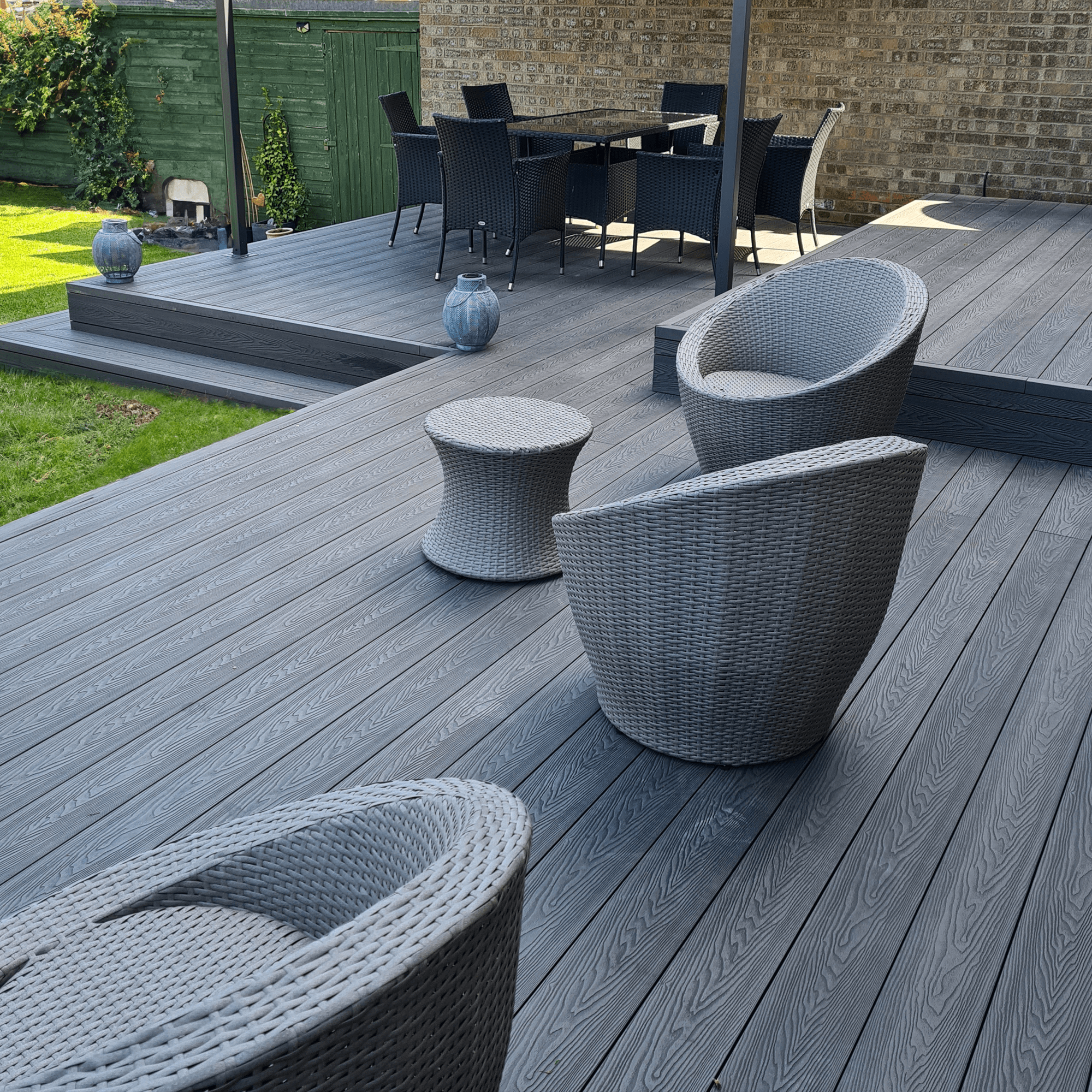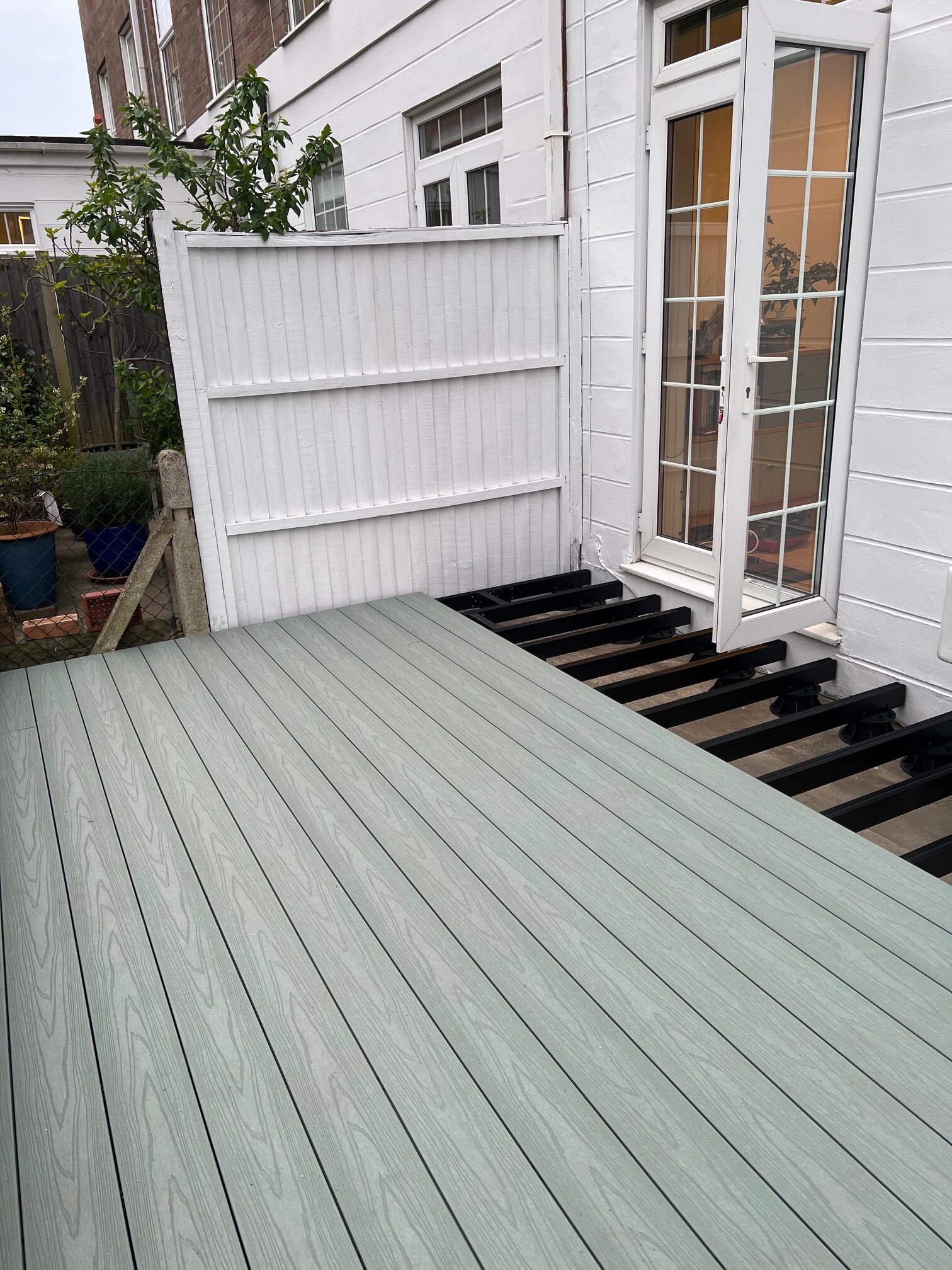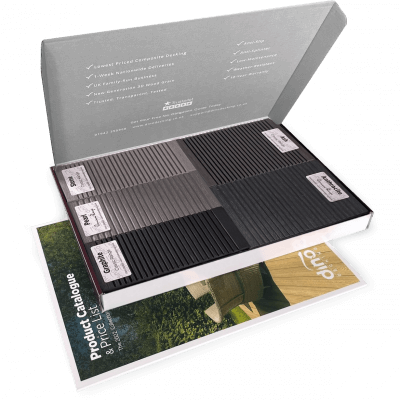10 Unique Ways to Use Interior Cladding
You’re probably aware that cladding can be a smart and practical covering for the exterior of a house, but did
Products in Stock
Lowest Prices
Express Delivery
10-Year Warranty
December Sale. Up To 15% Off.
Composite decking thickness may be an important consideration if you are looking to replace existing decking that is tired or damaged, or purchase brand-new composite decking. If you are looking to start a new garden project and are not sure if composite decking is the right choice for you, there are lots of benefits to consider. Dino Decking’s composite decking is an eco-friendly blend of wood and recycled plastic that is far more durable than traditional timber decking. It features slip-resistant and easy-to-clean surfaces that blend the beauty of wood with the durability of recycled materials. It is also resistant to cracking, splitting, warping, mould and rot.
When it comes to composite decking sizes, it’s important to consider decking board thickness as well as length. If you are unsure which composite decking dimensions you require, this article will provide all the information you need to choose the correct thickness for your project.
It is important to know what composite decking board sizes are available before starting any project. The length and width of the boards are a vital part of planning your deck as they will affect the design and material requirements for a given space or surface area. The thickness of the decking can sometimes be overlooked, but choosing the incorrect thickness could have a detrimental effect on your decking project. In particular, it can have an impact on your decking’s longevity, structural integrity and installation.
There are no UK-wide standard decking sizes, and options can vary depending on the manufacturer. Dino Decking’s composite decking sizes are standardised throughout our range, however, meaning that you can easily replace or match up any boards you need to. Our composite decking dimensions are 4,000mm in length, 145mm in width and 21mm in depth. They can be cut to size for different lengths, while the thickness of 21mm is both versatile and extra durable.

Joists are the main structural elements that decking boards fasten onto. Joists should be correctly measured and spaced so that the frame they form is of the right size and stability to support the decking boards. Thicker decking boards can offer more support and rigidity, potentially allowing for wider joist spacing. This in turn means that you might need to use fewer joists in your frame. You should always follow manufacturer’s guidelines when working out your joint spacing though.
The thickness of the decking boards will have a bearing on the structural integrity and sturdiness of the deck as a whole. Thicker boards will tend to be naturally sturdier than thinner boards of the same material, though it’s worth remembering that composite decking boards will be tougher and more durable than many comparable timber decking boards.
Thicker decking can typically span longer distances between joists, but it will also be heavier and thicker boards might need stronger supports underneath.
Despite popular opinion, the thickness of decking boards doesn’t make a big difference in extreme weather conditions. Thicker boards may feel sturdier to walk on, but they can still warp, rot and scratch just like thinner boards. While timber decking boards can be particularly prone to these issues regardless of their thickness, the advantages of composite decking is that it is naturally resistant to warping, rotting and splintering, as well as being more resistant to damage from water and heat.
Making changes in joist spacing due to the thickness of the decking boards could make installing your decking more complex, but overall it shouldn’t change the process too much. Just ensure that you have the correct tools to hand and follow manufacturer’s instructions for the dimensions and decking materials you are working with.

Occasionally, some decking boards might become worn or damaged enough to need replacing without you having to change the whole deck. This is more often the case with timber decking, which can be more prone to rot or damage. However, whether the decking boards are timber or composite, it is important to replace any individual boards with new boards of the same thickness. This will help to avoid uneven decking with boards that will not only look out of place but could also present a potential trip hazard. If you do have some clearly rotten or damaged boards, it is a good idea to inspect the rest to make sure that they are still safe and sound.
When thinking about the dimensions of your decking, it is generally the lengths and widths that first come to mind. These are important when you are planning and building your decking, but composite decking thickness should not be overlooked. Decking board thickness can have a bearing on the durability of your decking project, as well as the spacing of your joists and requirements of your frame.
Whatever your decking project entails, our decking boards have the thickness, durability and ease of installation you need.
If you’re ready to explore Dino Decking’s extensive range of composite decking products and the colours and configurations available, why not order your free sample pack or get in touch with our friendly experienced team who can answer any queries you might have?

Our sample pack contains a sample piece of each colour currently available. Order your free sample pack today to compare the colours and get a true feeling of the Dino Decking range!
You’re probably aware that cladding can be a smart and practical covering for the exterior of a house, but did
With winter approaching, you might be wondering how to heat a shed to keep it cosy and welcoming all year